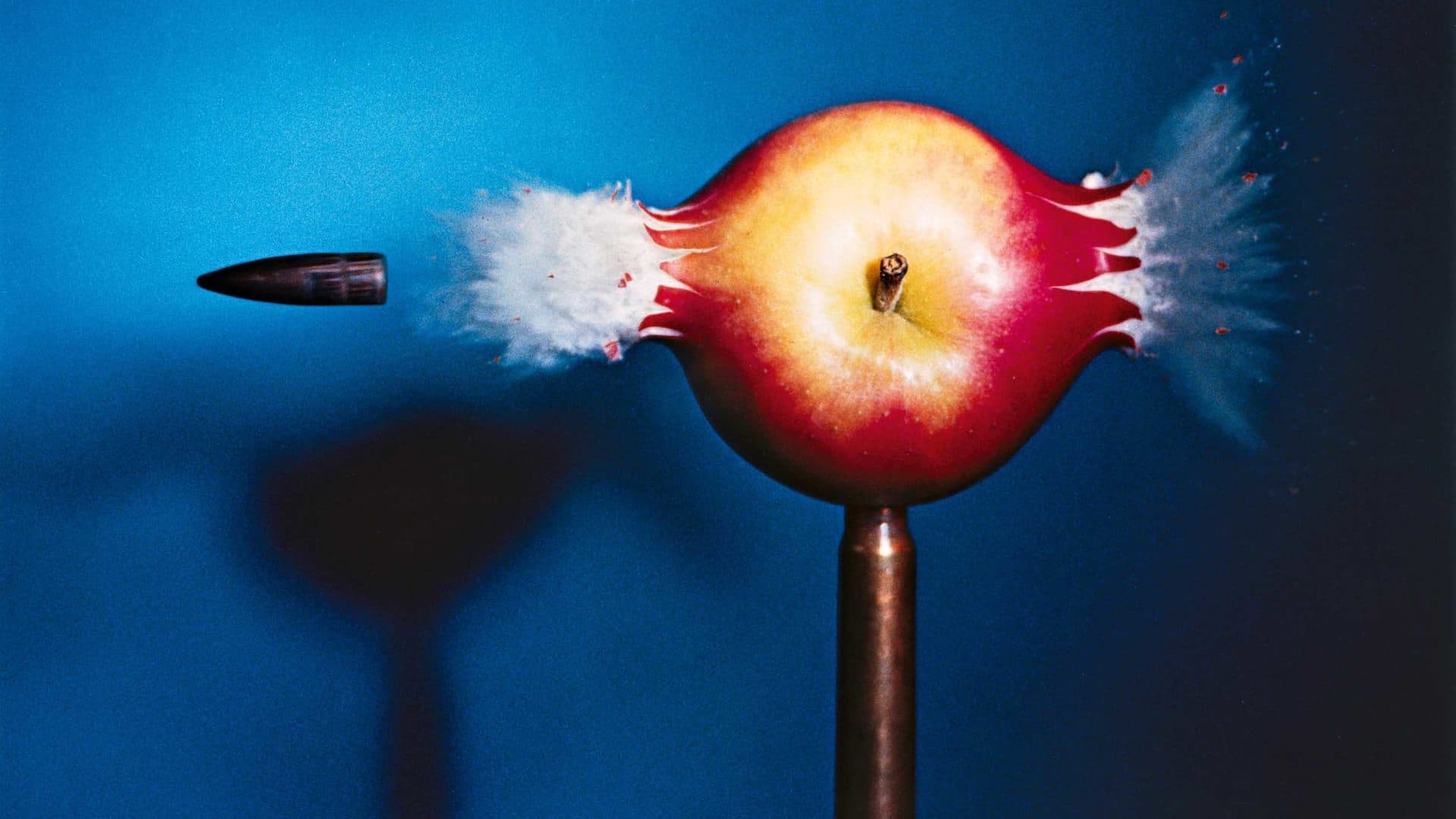Photographer of Moments Invisible to the Human Eye: Who is Doc Edgerton?
The story of photographer and electrical engineer Harold Eugene "Doc" Edgerton, who managed to take photographs of moments invisible to the human eye.

He achieved the impossible by photographing the moment when a 30-caliber bullet pierced the middle of an apple in front of a blue background. Moreover, he achieved this in 1964 with the technology of that day. He took this photo for a presentation at the Massachusetts Institute of Technology, where he is a professor. The title of his presentation is "How to make applesauce".
In 1964, there was no camera with a shutter speed that could capture a bullet traveling at 853.44 meters per second.
Edgerton was able to photograph a moving bullet in a dark room using stroboscopic flashes, the ancestors of today's electronic flashes. In the photograph he took, he captured a moment lasting 1/3 of a microsecond.
Harold Eugene "Doc" Edgerton (April 6, 1903 – January 4, 1990), also known as Papa Flash, was an American scientist and researcher, a professor of electrical engineering at the Massachusetts Institute of Technology. He is largely credited with transforming the stroboscope from an obscure laboratory instrument into a common device. He also was deeply involved with the development of sonar and deep-sea photography, and his equipment was used in collaboration with Jacques Cousteau in searches for shipwrecks and even the Loch Ness Monster.
Experts have emphasized the difficulty of timing the shutter release rather than producing the flash. Human reflexes are too slow to photograph a bullet manually. To achieve this, Edgerton ensured that the shutter was pressed with a voice command and used the sound of the bullet as the trigger command sound. The microphone he placed outside the frame captured the sound wave produced by the bullet when the gun was fired and transmitted it to a mechanism that would trigger the shutter.
In his later works, Edgerton imaged bullets passing through bananas, balloons, and playing cards.
While pyrotechnic flashes combine metallic fuels and oxidants to produce a short, bright flash, Edgerton produced a flash that flashes faster and is easier to control. At the Massachusetts Institute of Technology in the 1920s he developed a flash tube filled with xenon gas that, when exposed to high voltage, would cause electricity to jump between two electrodes for less than a second.
Edgerton has also developed a microflash that uses air instead of xenon. Thanks to the rapatronic camera he developed, he managed to photograph the nuclear bomb tests carried out during the Second World War. A rapatonic camera is a camera that can record a still image with an exposure time as short as 10 nanoseconds. There are many photographic works such as The Crown of the milk drop, the Milk Drop, the bullet piercing three balloons, the bullet tearing the playing card, Bobby Jones with the golf club, the ancient gun being fired, Stop Time, and Service.
Today, the photographs taken by Edgerton are exhibited at the Smithsonian American Art Museum in Washington. Although his photographs are exhibited in the art museum, Edgerton said, "Do not think of me as an artist. I am an engineer. I am only after the truth."
In 1992, the Edgerton Center was established at the Massachusetts Institute of Technology to honor Edgerton. The director of the center, J Kim Vandiver, stated that they still give Edgerton's works as a course and that they ask students to find strange things to photograph and take their own photographs of bullets. The new generation finds apples boring and objects such as lipstick and colored chalks attract more attention.
In 1988, he received the US National Technology and Innovation Award, which is an honorary award given by the US President to American inventors who have made significant contributions to the development of new and important technology, and the SPIE Gold Medal award in 1981. This award is SPIE's highest honor and is considered one of the highest awards in the field of instrumental sciences related to photonics and optical engineering.
He received the US National Science Award in Engineering in 1973 and the Howard N Potts Award in Science and Engineering given by the Franklin Institute in 1941.
